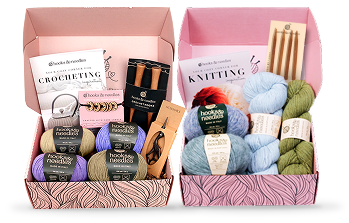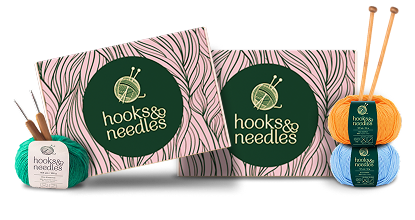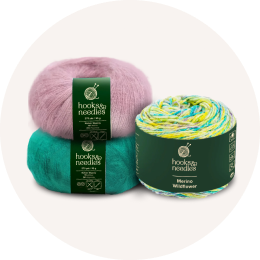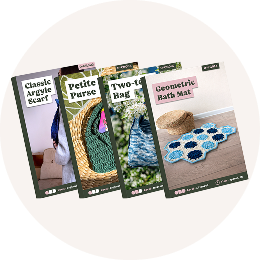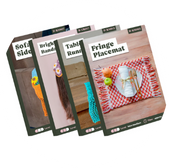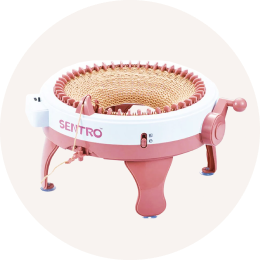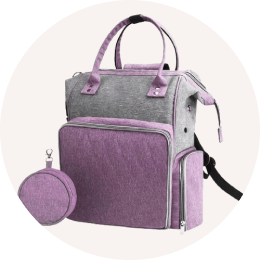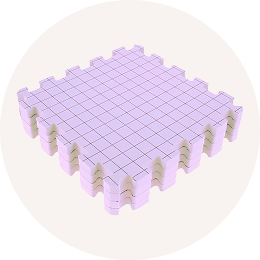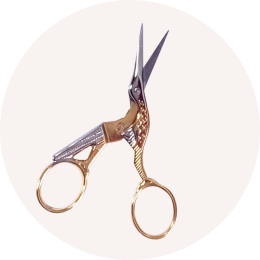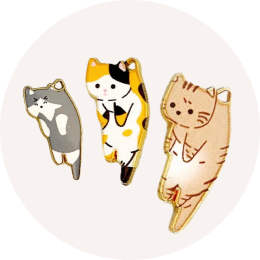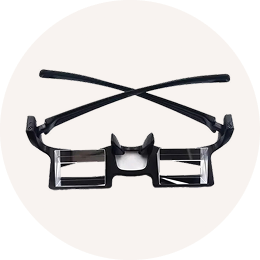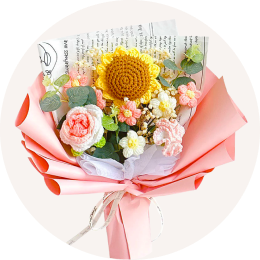Knitting projects can be a relaxing way to spend your weekend while creating something you’ll use and love. With chunky yarns and large needles, you can start Friday evening and finish by Sunday. From scarves to blankets, these simple patterns are perfect for beginners or anyone short on time. Let’s explore quick projects, essential tools, and tips to make your weekend knitting sessions enjoyable and productive.
Tools and Materials for Weekend Knitting
The right tools can make all the difference. Use bamboo needles (US sizes 10–15) for comfort and control. For larger projects, circular needles help evenly distribute weight and reduce fatigue. When it comes to yarn, bulky or super bulky weights (5 or 6) paired with matching needle sizes let you see progress faster. Accessories like stitch markers, a digital row counter, and a yarn bowl keep your knitting smooth and organized.
5 Projects to Try This Weekend
-
Chunky Garter Stitch Scarf
- Time: 3–4 hours
- Supplies: US size 15 needles, 200 yards of super bulky yarn
- Pattern: Knit every row until the scarf measures 60″.
-
Simple Beanie
- Time: 2–3 hours
- Supplies: US size 13–15 circular needles, 100 yards of super bulky yarn
- Pattern: Ribbed brim (knit/purl), stockinette body, and crown decreases.
-
Cozy Cowl
- Time: 2–3 hours
- Supplies: US size 13 needles, 150 yards of chunky yarn
- Pattern: Choose garter, seed, or stockinette stitch for an 8–10″ tall cowl.
-
Dishcloth
- Time: 1–2 hours
- Supplies: US size 7–8 needles, worsted cotton yarn
- Pattern: Cast on 30 stitches and knit until you have an 8″ square.
-
Small Blanket or Lap Throw
- Time: 6–8 hours
- Supplies: US size 15 needles, 400–600 yards of super bulky yarn
- Pattern: Cast on 60 stitches and knit in garter stitch until the blanket is 36″ x 48″.
Tips for Faster, Polished Results
- Knitting Faster: Use larger needles and simple patterns like garter or stockinette. Try continental knitting to improve your rhythm.
- Professional Finish: Keep tension consistent, block your finished project, and use a tapestry needle to weave in ends neatly.
- Fixing Mistakes: Dropped stitches can be picked up with a crochet hook. For tight cast-ons, switch to a larger needle size.
Ready to create something special this weekend? Explore Hooks & Needles for premium yarns, tools, and kits to make your projects easier and more enjoyable.
Tools and Materials for Fast Knitting
The right tools can transform a quiet weekend into a whirlwind of creative satisfaction. When it comes to fast knitting, it's not about having the most expensive gear; it's about making smart choices that work efficiently together. Let’s dive into the essential needles, yarns, and accessories that help you knit with speed and ease.
Knitting Needles
Choosing the right needles can make all the difference when aiming for quick progress. Needles not only affect your speed but also your comfort. Bamboo needles in US sizes 10–15 are a go-to for many weekend projects. They strike the perfect balance between grip and maneuverability. Unlike slippery metal needles, bamboo offers just enough friction to keep your stitches secure without slowing you down.
For smaller projects, bamboo straight needles (sizes 10–13) provide excellent control and help prevent dropped stitches. For larger items like cowls or hats, circular needles are a game-changer. They evenly distribute the weight of your work, reducing fatigue during longer sessions.
Hooks & Needles offers a bamboo set starting at $21.97 (36 pieces), covering all your basic needs. If you're ready to invest in a long-term toolkit, their Deluxe Wooden Knitting Needle Set at $119.97 is a reliable choice that will serve you well for years.
Yarns for Weekend Projects
The yarn you choose can either speed up or slow down your progress. For quick results, opt for bulky or super bulky yarns (weights 5 and 6). These heavier weights make it easy to see significant progress in just a few hours. For instance, a chunky scarf that might take weeks with a lighter yarn can be finished in a single evening when using a thicker option.
To maximize efficiency, pair your yarn with appropriately sized needles. Jumbo yarn on US size 15–17 needles can help you complete a cowl in just a few hours. Similarly, bulky yarn on US size 13–15 needles is perfect for scarves or other weekend projects.
Hooks & Needles' Natural Fibre European Yarns are a great choice for quality and speed. As one satisfied customer, Sarah M., shared:
Finally found yarn that actually feels as soft as it looks online!
For practical items like dishcloths, worsted weight cotton or acrylic yarn paired with US sizes 6–8 needles offers a great balance of durability and speed. These smaller projects require only 50–100 yards of yarn and can often be completed in under an hour, making them ideal for quick gifts or trying out new techniques.
Basic Accessories
The right accessories can keep your projects running smoothly and save you time. Stitch markers are invaluable for keeping track of pattern repeats, avoiding errors that can slow you down. A digital row counter ($9.97 at Hooks & Needles) eliminates the need for mental math, letting you stay focused on your knitting rhythm.
For finishing touches, yarn needles make weaving in ends and seaming pieces a breeze, giving your projects a polished look. If you’re knitting late into the night, consider investing in Hooks & Needles' Crocheting/Knitting Neck Lamp ($28.97, originally $39.98). Good lighting reduces eye strain and helps maintain consistent tension, even during those marathon sessions.
To keep your yarn tangle-free, a Wooden Yarn Bowl With Lid ($27.97) is a practical addition. It ensures your yarn feeds smoothly, letting you focus on the satisfying repetition of stitches without interruptions.
With the right tools and materials, weekend knitting becomes a rewarding experience. By Sunday evening, you can turn a quiet Saturday morning into a productive session, creating something tangible, wearable, and uniquely yours.
sbb-itb-f7119e8
5 Weekend Knitting Projects
There's something incredibly satisfying about starting and finishing a knitting project within a weekend. These five projects are designed to be quick, stylish, and rewarding, providing that instant sense of accomplishment every knitter loves. With simple patterns and high-quality materials from Hooks & Needles, you'll be amazed at what you can create in just a couple of days.
Chunky Garter Stitch Scarf
The chunky garter stitch scarf is a dream project for beginners. It uses just one stitch pattern - knitting every row - to create a reversible, textured scarf that looks far more intricate than it is. To get started, cast on 18 stitches using US size 15 needles and super bulky yarn, then knit every row until the scarf reaches 60″ in length.
You'll need about 200 yards (two skeins) of super bulky yarn, and the project can be completed in just 3–4 hours. The garter stitch is forgiving, so slight variations in tension won't stand out, making it an excellent choice for knitters still honing their skills. The finished scarf measures approximately 8″ x 60″, perfect for wrapping around your neck or draping over your shoulders.
For added flair, opt for variegated yarn to introduce color changes without extra effort, or stick with a solid shade to match your winter outfits. All the supplies you need are available at Hooks & Needles.
Next up, try your hand at a simple yet cozy beanie.
Simple Beanie or Hat
Knitting a hat might seem daunting at first, but with super bulky yarn and circular needles, it’s much easier than you’d expect. Using US size 13-15 circular needles and about 100 yards of yarn, cast on 40-44 stitches to achieve a 20-22″ circumference.
Start with a ribbed brim by alternating knit and purl stitches for about 2″. Then, switch to stockinette stitch for the main body of the hat. Once you've knitted a total length of 6-7″, begin decreasing for the crown by gradually reducing stitches in evenly spaced rounds until just a few remain.
Stitch markers can help you track your decreases and avoid mistakes. Most knitters can complete their first beanie in 2–3 hours, and with no seams to sew, the finishing process is as simple as weaving in the ends. All the materials for this project can be found at Hooks & Needles.
For your next project, try a stylish cowl that combines simplicity with warmth.
Cozy Cowl or Infinity Scarf
A cozy cowl is a fantastic choice for knitters looking for a quick and stylish accessory. Cast on enough stitches to create a 24″ circumference using chunky yarn and US size 13 needles. Choose your favorite stitch pattern - garter stitch for texture, seed stitch for a unique look, or stockinette for a smooth, classic finish - and knit until the cowl is 8-10″ tall.
The seed stitch, which alternates knit and purl stitches and switches their order on the next row, adds an appealing texture while remaining beginner-friendly. This pattern also lies flat, so there’s no need for blocking or additional finishing.
You can knit the cowl flat and seam the ends together or join your cast-on stitches in the round for a seamless look. This project requires about 150 yards of chunky yarn and can be completed in 2–3 hours. All supplies are available at Hooks & Needles.
Looking for something practical? Try a dishcloth next.
Dishcloth or Washcloth
Dishcloths are a perfect way to practice your knitting skills while creating something useful. Using 100% cotton yarn in worsted weight and US size 7 or 8 needles, cast on 30 stitches and knit until you have an 8″ x 8″ square.
Cotton yarn is ideal for dishcloths because it’s absorbent, durable, and holds up well to hot water and frequent washing. The garter stitch pattern is a great choice for this project, as it creates a textured surface that’s perfect for scrubbing and doesn’t curl at the edges.
These small projects typically require less than one skein of yarn and can be completed in 1–2 hours. They’re also a great opportunity to experiment with new stitch patterns or practice color changes. Many knitters find the repetitive nature of dishcloth knitting calming and enjoyable. Supplies for this project are available at Hooks & Needles.
Finally, tackle a cozy lap blanket to end your weekend on a high note.
Small Blanket or Lap Throw
If you're feeling ambitious, a lap blanket is a fantastic weekend project. With super bulky yarn and US size 15 needles, you can make a cozy throw in no time. Cast on 60 stitches and knit in garter stitch until the blanket measures approximately 36″ x 48″. You’ll need 4-6 skeins of yarn (about 400-600 yards total) for this project.
The garter stitch is perfect for blankets because it lies flat and creates a soft, squishy texture that’s ideal for snuggling. Plan to spend about 6–8 hours knitting over the weekend. The repetitive nature of this pattern makes it a great activity to pair with a movie marathon or an audiobook. By Sunday evening, you’ll have a warm, inviting blanket to show for your efforts. All the supplies you need can be found at Hooks & Needles.
These projects are perfect for building confidence and enjoying the satisfaction of completing something tangible. With simple techniques and forgiving patterns, you’ll not only finish your weekend with a completed project but also feel inspired to start your next one.
Tips for Speed and Professional Results
Turning your quick weekend projects into polished masterpieces doesn’t have to be a challenge. With the right techniques and preparation, you can achieve both speed and a professional finish. Here's how to elevate your creations.
Knitting Faster
Knitting faster isn’t just about moving your hands quicker - it’s about making smart choices. Opt for US size 15–19 needles paired with super bulky yarn to create larger stitches, allowing you to finish projects in hours instead of days.
Stick to simple patterns like garter, stockinette, or ribbing. These designs help you find a steady rhythm, and once your hands develop muscle memory, you can knit almost instinctively. Pair your knitting with a favorite playlist or a movie for an enjoyable experience. If you’re looking to boost efficiency, try continental knitting - it reduces hand movement, speeding up the process.
An organized workspace can also make a big difference. Smooth bamboo, wood, or aluminum needles minimize friction, helping you knit faster. A digital row counter keeps you on track without the hassle of recounting, while a wooden yarn bowl prevents tangles, keeping your momentum uninterrupted.
By incorporating these techniques, you’ll not only knit faster but also set the stage for a polished final product.
Getting a Polished Look
Achieving a professional look begins with consistent tension. Hold your yarn the same way throughout your project to avoid uneven stitches. Aim for a balance - your stitches should slide easily along the needle without being too tight or loose.
Blocking is a game-changer when it comes to refining your work. To block your project, soak it in lukewarm water for 10–15 minutes, gently squeeze out the excess water (don’t wring it), and lay it flat on a clean towel to dry. This process smooths out irregular stitches and gives your piece a clean, finished appearance.
Finishing touches make all the difference. When weaving in yarn ends, use a tapestry needle and follow the direction of your stitches for an almost invisible result. For seams, like those in hats or cowls, the mattress stitch offers a seamless join. Spending a little extra time on these details - just 10–15 minutes - can transform your project from handmade to expertly crafted.
If you’re looking for more detailed guidance, check out the tutorials available through Hooks & Needles.
Hooks & Needles Tutorials
Perfecting these techniques is much easier with clear guidance and the right tools. Hooks & Needles provides step-by-step tutorials that cover everything from basic blocking to advanced finishing techniques. These resources are particularly helpful for overcoming common challenges that might slow you down.
Having high-quality tools on hand also makes a noticeable difference. Check the Tools and Materials section for recommended needle sets and accessories that support faster, more polished results.
Even small accessories can elevate your experience. For instance, the levitating premium yarn holder ($42.97) not only keeps your yarn tangle-free but also adds a stylish touch to your knitting setup.
Ultimately, developing good habits is the foundation for consistent, professional results. Set aside distraction-free time for your projects, keep your tools within reach, and prepare your materials before you start. With regular practice and these techniques, you’ll build the confidence and muscle memory to make your weekend knitting sessions faster, smoother, and more rewarding.
Troubleshooting Common Mistakes
Weekend knitting projects are meant to be enjoyable, but mistakes can sometimes throw you off track. The good news? Most common errors are easy to fix, so you can keep your project looking polished without losing precious time. Below, we’ll tackle a few frequent challenges knitters face and share simple solutions to keep your creations on course.
Uneven Edges
Uneven edges are a common frustration, especially for beginners. They’re often caused by inconsistent tension or accidentally adding or dropping stitches at the ends of rows. While these irregularities can make your project look less tidy, they’re easy to prevent and correct.
Start by focusing on steady tension. Keep your grip relaxed and consistent to avoid stitches that are too tight or too loose. At the end of each row, count your stitches to ensure you haven’t accidentally added or lost any.
If you notice uneven edges in a finished project, you can smooth them out by weaving any excess yarn into nearby stitches with a tapestry needle. Blocking your project - soaking it in lukewarm water and laying it flat to dry - can also help even out tension issues.
For a cleaner edge while knitting, try slipping the first stitch of each row purlwise instead of knitting it. This technique creates a neat, uniform edge that looks more polished. Using chunky yarns and larger needles (US size 13–19) can also make the process easier for beginners, as they’re more forgiving of small mistakes.
Now, let’s move on to another common issue: dropped stitches.
Dropped Stitches
A dropped stitch might seem like a disaster, but it’s actually one of the easiest mistakes to fix. When a stitch slips off your needle, it forms a loose loop that can unravel down your work, creating gaps or disrupting your pattern.
As soon as you spot a dropped stitch, pause your knitting to address it. If the stitch has only dropped one row, you can simply insert your needle into the loose loop and the row above it, then pull the yarn through to rework the stitch. For stitches that have dropped several rows, a crochet hook is your best friend. Use it to pull the stitch back up row by row before placing it back on your needle.
To avoid dropped stitches in the first place, maintain a steady, deliberate rhythm while knitting. Rushing often leads to mistakes. Stitch markers can also help you keep track of your progress and prevent errors.
Next, let’s look at how to handle tight cast-ons.
Tight Cast-Ons
A tight cast-on can make your first row difficult to knit and cause the edge of your project to pucker or pull. If you find it hard to insert your needle into the cast-on stitches or notice that the edge looks overly tight, you’ve likely cast on too tightly.
The simplest way to avoid this issue is to use a needle one or two sizes larger for your cast-on row. This creates looser loops that are easier to work into. Once the cast-on is complete, switch back to your regular needle size.
Pay attention to your tension as you cast on. Keep your yarn relaxed and avoid pulling it tight after forming each stitch. The long-tail cast-on method is particularly helpful for beginners, as it naturally produces a stretchier edge. Practice this technique slowly to get the hang of it.
If you’ve already cast on tightly, you can stretch the edge gently by hand to loosen it. Blocking your finished project can also help relax the stitches and create a more flexible edge. For smaller projects like dishcloths, consider picking up stitches along the tight edge and knitting a simple border to add flexibility and a decorative touch.
Mistakes like these are part of the learning curve, and even seasoned knitters encounter them from time to time. The garter stitch is an excellent choice for beginners, as it naturally lays flat and hides minor tension issues better than other patterns. With practice and patience, you’ll gain the skills and confidence to handle these challenges and enjoy creating beautiful weekend projects.
FAQs
What are some quick and easy knitting projects for beginners to finish over a weekend?
If you're searching for easy knitting projects that deliver quick results, there are plenty of beginner-friendly ideas you can finish in just a weekend. Items like chunky scarves, dishcloths, and cozy hats are perfect choices. They not only work up fast but also give you that satisfying sense of accomplishment.
To dive in, you’ll need a few essentials: knitting needles, yarn (chunky or worsted weight is ideal for quicker progress), and a straightforward pattern. At Hooks & Needles, we offer a range of beginner-friendly patterns and kits to make starting out even simpler. Be sure to match your tools and yarn to the pattern’s recommendations for the smoothest experience.
Want to speed things up? Go for thicker yarns and larger needles - these make your stitches bigger, helping your project take shape faster. With the right materials and a bit of practice, you’ll have a finished piece ready to enjoy or gift by Sunday evening!
What’s the best way to pick the right yarn and needle size for quick weekend knitting projects?
For those short weekend projects, chunky or bulky yarns are your best bet. They work up quickly and deliver a beautifully textured finish. Make sure to match your yarn with the needle size suggested on the yarn label for smooth stitching and proper tension. Want to speed things up even more? Try using larger needles - US size 10 or bigger - when working with thicker yarns. They’ll help you create warm, cozy pieces in no time. Don’t forget to check your project pattern for any specific guidelines to ensure everything turns out just right!
How can I make my knitting projects look more polished and professional?
To achieve a polished look in your knitting projects, it’s all about the finer details. Start by blocking your finished pieces with steam or water - this helps even out stitches and shapes your work precisely. Maintaining consistent tension while knitting is equally important, as it ensures uniform stitches throughout.
Don’t overlook the importance of weaving in ends neatly; this simple step can significantly enhance the overall appearance. Using high-quality yarns and tools also contributes to a more refined finish. For smoother edges, try techniques like slipping the first stitch of each row or adding a border stitch. These small tweaks can make a noticeable difference and give your creations a truly professional touch.

